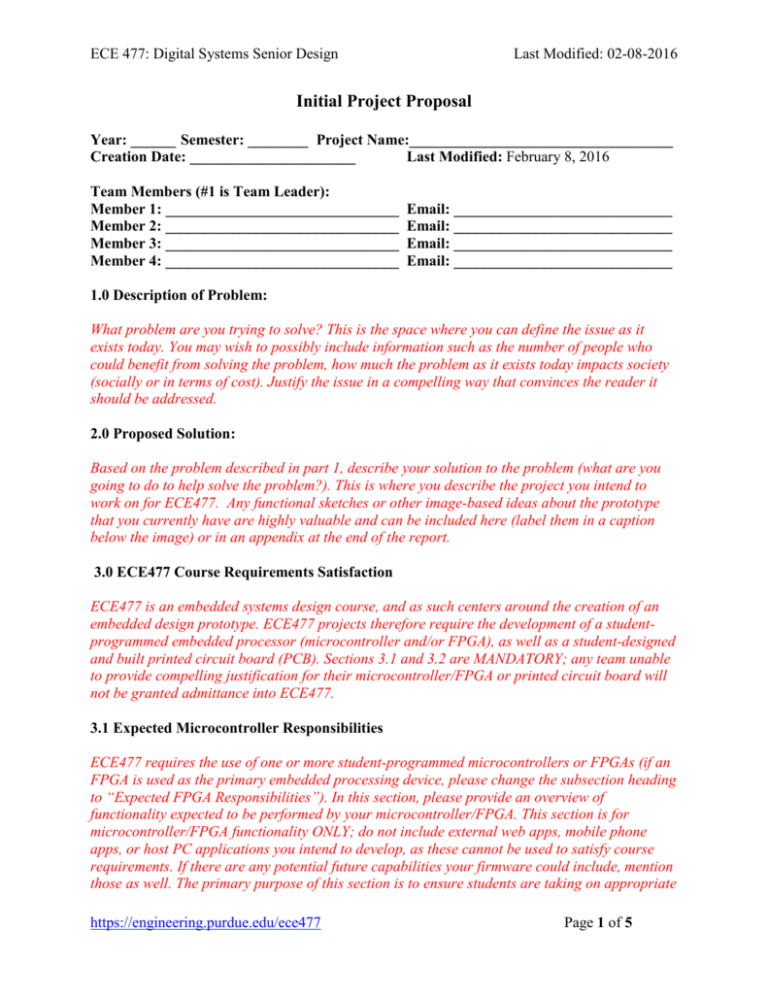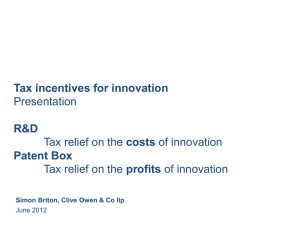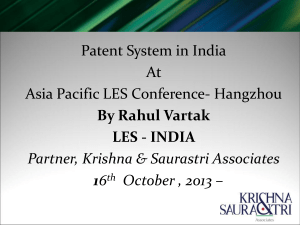Initial Project Proposal
advertisement

ECE 477: Digital Systems Senior Design Last Modified: 02-08-2016 Initial Project Proposal Year: ______ Semester: ________ Project Name:___________________________________ Creation Date: ______________________ Last Modified: February 8, 2016 Team Members (#1 is Team Leader): Member 1: _______________________________ Member 2: _______________________________ Member 3: _______________________________ Member 4: _______________________________ Email: _____________________________ Email: _____________________________ Email: _____________________________ Email: _____________________________ 1.0 Description of Problem: What problem are you trying to solve? This is the space where you can define the issue as it exists today. You may wish to possibly include information such as the number of people who could benefit from solving the problem, how much the problem as it exists today impacts society (socially or in terms of cost). Justify the issue in a compelling way that convinces the reader it should be addressed. 2.0 Proposed Solution: Based on the problem described in part 1, describe your solution to the problem (what are you going to do to help solve the problem?). This is where you describe the project you intend to work on for ECE477. Any functional sketches or other image-based ideas about the prototype that you currently have are highly valuable and can be included here (label them in a caption below the image) or in an appendix at the end of the report. 3.0 ECE477 Course Requirements Satisfaction ECE477 is an embedded systems design course, and as such centers around the creation of an embedded design prototype. ECE477 projects therefore require the development of a studentprogrammed embedded processor (microcontroller and/or FPGA), as well as a student-designed and built printed circuit board (PCB). Sections 3.1 and 3.2 are MANDATORY; any team unable to provide compelling justification for their microcontroller/FPGA or printed circuit board will not be granted admittance into ECE477. 3.1 Expected Microcontroller Responsibilities ECE477 requires the use of one or more student-programmed microcontrollers or FPGAs (if an FPGA is used as the primary embedded processing device, please change the subsection heading to “Expected FPGA Responsibilities”). In this section, please provide an overview of functionality expected to be performed by your microcontroller/FPGA. This section is for microcontroller/FPGA functionality ONLY; do not include external web apps, mobile phone apps, or host PC applications you intend to develop, as these cannot be used to satisfy course requirements. If there are any potential future capabilities your firmware could include, mention those as well. The primary purpose of this section is to ensure students are taking on appropriate https://engineering.purdue.edu/ece477 Page 1 of 5 ECE 477: Digital Systems Senior Design Last Modified: 02-08-2016 projects for ECE477, and that the project presents an appropriate level of difficulty for the ECE477 student team. 3.2 Expected Printed Circuit Responsibilities ECE477 requires the use of one or more student-designed and built printed circuit boards. In this section, please provide a general idea of systems expected to be present on your printed circuit board. Common examples include your microcontroller/FPGA, on-board memory (or an interface to external memory), power/voltage regulation/battery monitoring and management, and system interfaces (USB, wireless, LCDs, sensors, and others). The primary purpose of this section is to ensure students are taking on appropriate projects for ECE477, and that the project presents and appropriate level of difficulty for the ECE477 student team. 4.0 Market Analysis: You have a problem, you have a proposed solution, now it is time to analyze your potential market for your solution. Market analysis should be a researched attempt to answer the question “If I make this device, who is potentially going to use it?” Your potential market need not be purely financial in nature, although any financial estimations you can make about a market are certainly appropriate here. 5.0 Competitive Analysis: In most situations, there is a high likelihood that there are already patents, products, or projects similar (in all ways or only in some) to what you intend to do for your project. Even if this is not the case, there are presumably current approaches and methods to partially address the problem in part 1. This section is where you analyze competing ideas and evaluate strengths and weaknesses of those ideas. Through competitive analysis you may glean insight into particular approaches to solving the problem you hadn’t previously considered, as well as features to potentially incorporate into your design. Cite every competitor that you find. Diligence is valuable here: the more sources of inspiration and prior art you can find, the better. 5.1 Preliminary Patent Analysis: In this section, some basic patent searching should be performed and potential competing patents considered. Replace section titles with relevant title of patents (see example project proposal for additional information). It is recommended that section 5.2, commercial product analysis, be completed first, as many commercial products are protected under patents and this can be an easy way to discover relevant competing patents while reducing search efforts. Additionally, Google Patents provides a particularly good interface for patent searches, though other patent search services exist. Of particular interest for patent analysis is non-expired (patents filed within 20 years of the present date) patents for which the possibility of infringement exists, or expired patents (filing date was >20 years ago) which are highly similar to the proposed project and which can be used as defensive prior art. 5.1.1 Patent #1: https://engineering.purdue.edu/ece477 Page 2 of 5 ECE 477: Digital Systems Senior Design Last Modified: 02-08-2016 Information about the first relevant patent 5.1.2 Patent #2: Information about the second relevant patent 5.1.3 Patent #3: Information about the third relevant patent 5.2 Commercial Product Analysis: In this section, some basic searching should be performed for competing commercial products. Replace section titles with relevant title of products (see example project proposal for additional information). Inclusion of a picture that helps describe the product is helpful and recommended. Particularly valuable from an engineering perspective is any technical information that can be obtained on how the products work; this will allow you to evaluate the products and compare technical approaches. If a product is protected by U.S. patents, that is also extremely valuable to know. Discuss the pros and cons of the product compared to your proposed solution (particularly those which are technical and nature) 5.2.1 Commercial Product #1: Information about the first relevant product 5.2.2 Commercial Product #2: Information about the second relevant product 5.2.3 Commercial Product #3: Information about the third relevant product 5.3 Open Source Project Analysis: In this section, some basic searching should be performed for competing educational, research, and open-source projects. Replace section titles with relevant title of products (see example project proposal for additional information). Inclusion of a picture that helps describe the project is helpful and recommended. Particularly valuable from an engineering perspective is any technical information that can be obtained on how the projects work; this will allow you to evaluate the projects and compare technical approaches. Any details about the licenses of open source projects are particularly valuable to know (Do the licenses require share-alike or that derivatives also be open source? Do they allow commercial use?). Discuss the pros and cons of the project compared to your proposed solution (particularly those which are technical and nature). Discuss anything that might be adapted from a given project to help improve your own solution. https://engineering.purdue.edu/ece477 Page 3 of 5 ECE 477: Digital Systems Senior Design Last Modified: 02-08-2016 5.3.1 Open Source Project #1: Information about the first relevant project 5.3.2 Open Source Project #2: Information about the second relevant project 5.3.3 Open Source Project #3: Information about the third relevant project 6.0 Sources Cited: Throughout this and other papers, use of the IEEE citation style should be used. Use of embedded hyperlinks for all web-based sources is required. A reference to the IEEE citation style format is provided here. https://engineering.purdue.edu/ece477 Page 4 of 5 ECE 477: Digital Systems Senior Design Last Modified: 02-08-2016 Appendix 1: Concept Sketch Provide one or more drawings of your proposed finished project. Scanned copies of hand-drawn sketches are acceptable. https://engineering.purdue.edu/ece477 Page 5 of 5





